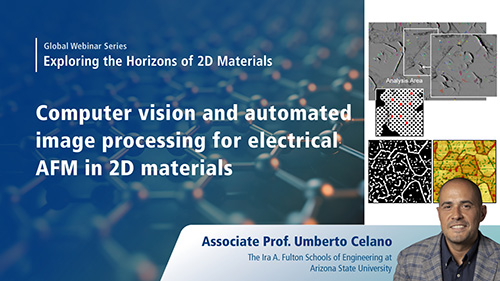
The second recipient of the 2025 Park AFM Scholarship is Dr. Kaimin Zhang from TICNN, Tianjin University. Dr. Zhang is a member of Professor Ma Lei’s research team at the Tianjin International Center for Nanoparticles and Nanosystems (TICNN), Tianjin University. In collaboration with Professor Walt A. de Heer, Professor Ma’s team has recently made significant progress in the field of semiconducting graphene. Park Systems’ intelligent and precise AFM NX10 has played a crucial role in supporting the team to overcome challenges and achieve remarkable scientific results. Their research, titled “Ultrahigh-mobility semiconducting epitaxial graphene on silicon carbide,” was accepted by Nature (https://doi.org/10.1038/s41586-023-06811-0).
1. Please summarize the research you do and explain why it is significant?
The research on semiconducting epigraphene. The development of the world's first functional semiconductor graphene transistor has constituted a major breakthrough in carbon-based electronics. This achievement serves as a crucial milestone in the transition from silicon-based to carbon-based integrated circuit technologies. Furthermore, the incorporation of semiconductor graphene devices into the next generation of integrated circuits is poised to play a pivotal role in shaping the future direction of the industry.
2. How might your research be used?
Due to its unique properties, semiconductor epigraphene maybe extensively used in consumer electronics, communications, automotive, energy, industrial automation, medical, data processing, and aerospace sectors in the future.
3. Why is the Park AFM important for your research?
In our recent work, Park AFM plays a crucial role in characterizing the surface morphology of semiconducting epitaxial graphene. Park AFM was used to measure the morphology of the steps on the terraces, which are crucial for understanding the material's structural properties at the nanoscale. This precise measurement capability helps reveal the uniformity, flatness, and defects on the surface, which are essential for assessing the quality of the graphene layers and their suitability for applications in nanoelectronics.
4. What features of Park AFM are the most beneficial and why?
In the characterization of two-dimensional (2D) materials, the Park AFM provides significant advantages. It offers nanoscale resolution down to atomic dimensions, allowing detailed analysis of surface textures, defects, and particle distributions, which are essential for evaluating material quality. Moreover, the Park AFM has high-sensitivity surface force measurement capability, allowing it to accurately detect surface interaction forces, such as adhesion and friction, at the nanoscale. This is crucial for understanding the behavior of materials in practical applications. In addition, the Park AFM can perform a variety of tests using different modes—such as contact, non-contact, and force spectroscopy—thereby meeting a wide range of testing requirements. Taken together, the Park AFM's high resolution, mechanical property testing capabilities, surface force measurement, and versatility make it an essential tool for investigating the physical characteristics and application potential of 2D materials.




